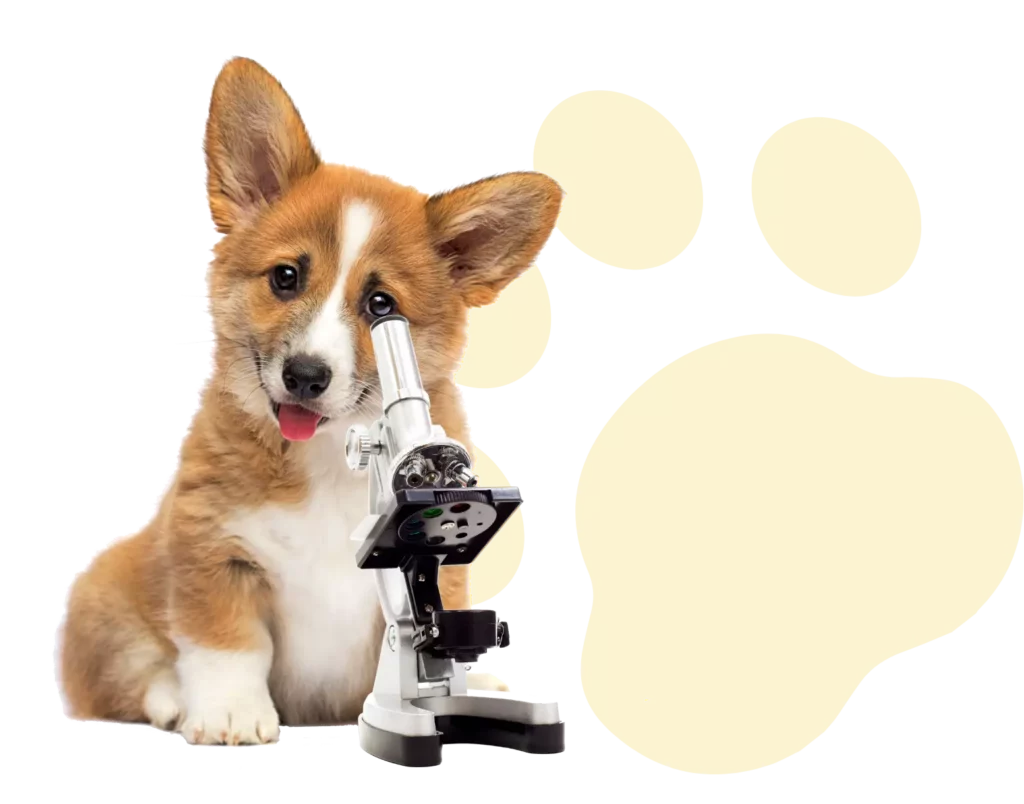Cerebellar ataxia causes cerebellar shrinkage, leading to loss of balance and uncoordinated movements along with tremors, dizziness, hearing loss, weakening of limbs, head tilting, nystagmus, nausea and loss of appetite.
Benign Familial Juvenile Epilepsy or focal epilepsy is a genetic disorder, characterized by the recurrent seizures in dogs with facial twitches, rhythmic jerks, hypersalivation, restlessness or behavioral changes with varying degree of severity.
Neuronal Ceroid Lipofuscinosis is a severe neurological disorder with late-onset and slowly progressive cognitive and motor degeneration resulting in impaired vision, seizures, aggressive behavior, and increased sensitivity to loud noises.
Ataxia is characterized by uncoordinated movements, loss of coordination and generalized ataxic gait starting at 4 weeks of age with seizures, showed pacing and circling and developed central blindness in affected dogs
Achromatopsia is an inherited eye disorder, characterized by cone photoreceptor dysfunction, leading to severely reduced or complete vision loss during daylight hours, photophobia, nystagamus and total colour-blindness.
Cerebellar hypoplasia, is non-progressive form of neurological condition resulting in inadequate development of cerebellum with poor motor skills, clumsiness, frequent falling, wide stance, tremors and vision problems.
Cerebellar abiotrophy Also known as neonatal cerebellar cortical degeneration (NCCD) is a neurodegenerative disorder affecting the cerebellum. Inheritance pattern is unclear
Cerebellar Ataxia is an inherited neurological disease, characterized by degeneration of cerebellum. The symptoms include ataxia, seizures, stumbling, staggering, tremors, hopping, falling and growth impairment.
Cerebellar Cortical Degeneration is an inherited neurological condition, disrupting synaptic transmission and neuronal excitability with symptoms of dysmetric ataxia, marked truncal sway, tremors with rapid progression of the disease after onset.
The neuronal ceroid lipofuscinoses (NCLs) are a group of lysosomal storage diseases characterized by intraneuronal accumulation of fluorescent granules and early neuronal death.
Degenerative myelopathy, also known as chronic degenerative radiculomyelopathy, is an inherited disease affecting the spinal cord, resulting in slowly progressive hind limb weakness and paralysis.
GM1 gangliosidosis is a lysosomal storage disease caused by beta galactosidase deficiency and characterized by progressive neurological deterioration including weight loss, ataxia, abnormal gait, tremors, strabismus and positional nystagmus.
Neuronal Ceroid Lipofuscinosis 12 is an inherited disease, characterized by degeneration of Central Nervous System with affected dogs showing loss of vision, behavioral changes, cerebellar ataxia, tremors, and decline of cognitive and motor functions.
Neuronal Ceroid Lipofuscinosis 6 is an inherited disease, characterized by degeneration of Central Nervous System with affected dogs showing loss of vision, behavioral changes, cerebellar ataxia, tremors, and decline of cognitive and motor functions.
Spongy Degenerative Cerebellar Ataxia, is an early onset inherited neurodegenerative disorder characterized by ataxiac gait, lack of co-ordination, poor balance, seizures, accompanied by stumbling, staggering, tremors, hopping, and falling.
Krabbe Disease is an inherited neurological disorder with clinical signs of cerebellar ataxia/intention tremor, postural reaction deficit, stiffness, spastic paresis/paralysis, hearing loss, vision loss, motor and sensory neuropathy.
Polyneuropathy is an inherited neurological disease, with symptoms including change in gait, loss of bark, limb weakness, tremors, lack of coordination, difficulty in swallowing and atrophy.
Polyneuropathy is an inherited, early onset neurological disease, characterized by dilated myelin sheaths of nerve cells. Symptoms include visual problems, laryngeal paralysis, regurgitation, gait abnormalities, ataxia and visual defects.
Necrolapsy is an inherited neurological disorder, characterized by abnormal nervous system. Affected dogs may exhibit sudden collapse and loss of movement with recovery in some time, excessive daytime sleepiness and sleep paralysis
Neuronal Ceroid Lipofuscinosis, 1 is an inherited neurological disorder, characterized by progressive degeneration of central nervous system. Common symptoms include partial or total vision loss, behavior changes, abnormal gait, and seizures
Neuronal Ceroid Lipofuscinosis, 10 is an inherited neurological disorder, characterized by progressive degeneration of central nervous system. Common symptoms include partial or total vision loss, behavior changes, abnormal gait, and seizures.
Neuronal Ceroid Lipofuscinosis, 8 is an inherited neurological disorder, characterized by progressive degeneration of central nervous system. Common symptoms include partial or total vision loss, behavior changes, abnormal gait, and seizures.
Neonatal encephalopathy with seizures is a serious inherited progressive brain disorder, characterized by weakness, mobility issues, and seizures in affected pups with uncoordinated movements and mental dullness.
Neuroaxonal dystrophy is a neurological genetic disorder, characterized by progressive degeneration of the nerve cells. Symptoms include high stepping gait, poor coordination, stumbling, head tremors, incontinence, Vit E deficiency and secondary pneumonia.
Degenerative Polyneuropathy results in slow wasting of muscles, exercise intolerance, gait abnormalities, ambulatory paraparesis, and difficulty in breathing due to involvement of the larynx and laryngeal folds in the throat.
Spinocerebellar Ataxia is an inherited disease characterized by abnormal coordination. The symptoms include ataxia, uncoordinated walk with stilted "toy soldier" leg movements, involuntary eye movement and growth impairment.
Tremors X-linked is an inherited disorder characterized loss of coordination between brain and body. The male puppies have difficulties standing, eating and moving and show uncoordinated gait, leading to scuffing or dragging of the paws.
